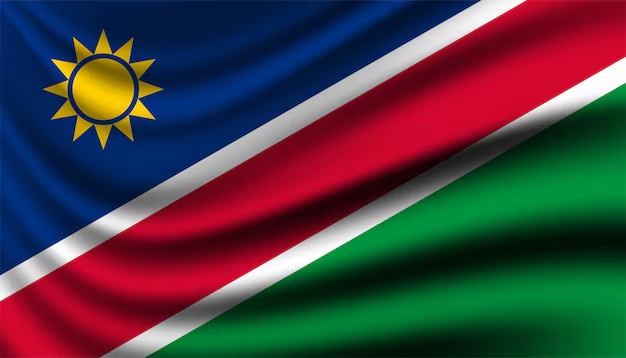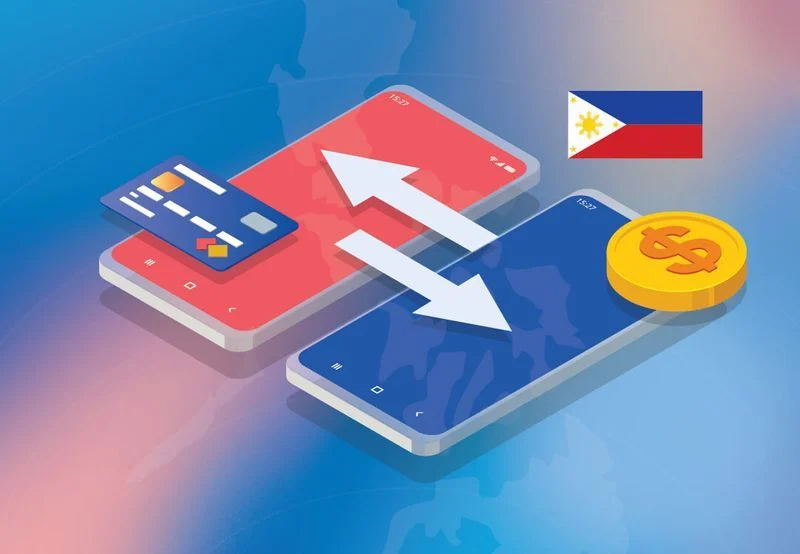Namibia is a beautiful country in southern Africa, known for its wide open spaces, friendly people, and strong sense of community. Like many countries, Namibia is going through big changes in the way people move money. Whether you’re paying school fees, sending money to a family member, or running a business, digital payments are becoming the new normal.
The landscape of Namibia payment rails, Namibia payment infrastructure, and Namibia digital payments is evolving. The country’s financial ecosystem is pushing toward faster, more inclusive ways to send and receive cash. That’s where systems like NamPay Namibia, Namibia EFT system, and Namibia mobile wallets start playing a key role.
Let’s break it down. Namibia’s move toward cashless payments isn’t just a trend; it's about putting more folks into the financial systems. Namibia banking system and Namibia financial inclusion go hand in hand here: better payment rails support businesses, empower individuals, and help the entire economy. And yeah, the rise of digital wallet adoption in Namibia and Namibia instant payments means the boundaries of traditional banking are getting blurry.
This blog talks about Namibia payment rails, NamPay Namibia, Namibia digital payments, Namibia EFT system, and Namibia payment infrastructure.
Namibia Payment Rails
The actual channels that move value between banks, businesses, and individuals are called payment rails. Think of them like the roads in a city: some are highways built for speed, others are smaller lanes connecting neighborhoods. In Namibia, the key roads are the Namibia EFT system, NamPay electronic payments, Namibia instant payments, and the growing network of Namibia mobile wallets.
Electronic Funds Transfer (EFT) is still one of the most relied-on methods. It’s the formal rail where money moves from one bank account to another. Delays exist, but the system is foundational to the Namibia banking system.
NamPay Namibia is a modern layer introduced to push faster, electronic, and real-time transfers. This is where Namibia instant payments are really taking off. It’s designed to modernize the way the EFT backbone works.
With phone penetration high and more people demanding convenience, digital wallet adoption in Namibia is accelerating. Mobile wallets put payment rails directly in people’s pockets.
While cards and POS are still important for urban areas, they don’t stretch everywhere.
Basically, the Namibia payment infrastructure is being rewired to make transfers faster, cheaper, and more inclusive. Namibia’s move toward cashless payments is shaped by local realities. Businesses benefit from wider access, lower cash-handling costs, and stronger connections to both local and cross-border markets.
NamPay Namibia
NamPay Namibia is the country’s flagship system to modernize electronic transfers and push the market toward Namibia instant payments. Launched by the Bankers Association of Namibia with oversight from the Bank of Namibia, NamPay was designed to upgrade the traditional Namibia EFT system and align with global payment standards. What this really means is that sending money electronically is no longer limited to next-day settlements as NamPay electronic payments are structured to be faster, cheaper, and more secure.
EFT Credit (NamPay Credit) is used for salaries, supplier payments, and regular business transfers. Debit Orders (NamPay Debit) is a modernized replacement for the old debit order system, cutting fraud risks and giving consumers more control over recurring payments. Namibia Instant Payments (NamPay RTC) is the biggest step forward as through it, money moves instantly, 24/7, across participating banks.
The Namibia banking system has long relied on overnight batches and delayed EFTs. With NamPay, the rails are shifting to a real-time model that supports Namibia’s move toward cashless payments. And when you connect that to the rising digital wallet adoption in Namibia, you see an ecosystem where mobile-first users and traditional account holders both benefit.
Namibia Digital Payments
Namibia digital payments are no longer just an urban convenience. They’re becoming part of everyday trade across the country. Whether it’s paying for utilities, topping up airtime, buying groceries, or moving money to family in rural regions, digital channels are now competing with cash. The drive comes from two sides: upgrades to the Namibia payment infrastructure like NamPay electronic payments, and the explosive growth of Namibia mobile wallets.
The digital wallet adoption in Namibia is fueled by affordability as USSD-based wallets and mobile apps make it possible to transact without a bank branch nearby. Digital wallet adoption in Namibia is climbing, backed by services like PayToday, Mobipay, eWallet from FNB, and EasyWallet. But local wallets and EFT rails need to connect globally. That’s where a platform like TransFi stands out to be the best. It links Namibia instant payments and Namibia EFT system rails into 40+ currencies and 250+ local methods, wrapping it all in AI-powered routing for the most cost-effective flow every time.
Namibia EFT System
The Namibia EFT system has been the backbone of electronic payments for decades. EFT, or electronic funds transfer, is the process banks use to move money between accounts. Salaries, supplier payments, loan repayments, and government disbursements all run through this channel.
The introduction of NamPay Namibia has upgraded how EFT works. Traditional EFT could take up to 24 hours or more to reflect, which created friction for both businesses and individuals. Under NamPay electronic payments, EFT is now faster, safer, and better aligned with Namibia instant payments. This evolution is critical because while mobile wallets and QR payments grab headlines, the Namibia EFT system still carries the bulk of corporate and government flows.
For businesses, EFT remains essential because of its scale. A company paying hundreds of employees or dozens of suppliers in a single batch can’t always rely on mobile wallets. The Namibia banking system still depends on EFT rails to keep the economy running smoothly.
At the same time, linking EFT with Namibia digital payments is improving financial inclusion. More wallets now allow top-ups through EFT, bridging the formal and informal economy. This reinforces Namibia’s move toward cashless payments and sets the stage for the future of payment systems in Namibia.
Platforms like TransFi extend this by connecting Namibia EFT system rails into cross-border corridors with the lowest FX rates, instant settlements, and AI-powered routing. That makes local reliability work on a global scale.
Also read about: Payment Rails in South Sudan: Banks, New Systems, and Mobile Money
Namibia Payment Infrastructure
When people talk about Namibia payment infrastructure, they’re talking about the full set of rails that keep money moving: EFT, NamPay Namibia, Namibia instant payments, card networks, ATMs, POS devices, and the fast-growing Namibia mobile wallets. It’s a system that has both traditional and modern layers, and the interesting part is how those layers now overlap.
The Namibia EFT system does most of the work, processing trillions of Namibian dollars each year. It anchors the Namibia banking system and serves businesses, payroll, and government transfers. NamPay electronic payments is the modernization piece, introducing Namibia instant payments through real-time clearing. It’s the bridge between old rails and future rails.
With smartphone use rising and USSD options covering even feature phones, digital wallet adoption in Namibia is accelerating. Solutions like FNB’s eWallet, MTC’s AwehPay, and PayToday are changing daily spending habits.
What this really means is that Namibia’s financial backbone is no longer one-dimensional. The country is building a layered Namibia payment infrastructure where cash, EFT, instant transfers, and wallets co-exist. And each new layer pulls more people into the system, boosting Namibia financial inclusion and reducing reliance on physical cash.
Once you connect those domestic layers to global rails, businesses can expand with fewer limits. That’s where TransFi comes in. By plugging into Namibia payment rails and combining them with 40+ currencies, 250+ local methods, and AI-powered routing, TransFi takes a payment from Windhoek and delivers it to London, Lagos, or Lima at the lowest cost and fastest speed.
Conclusion
The way money moves in Namibia is changing fast. From the backbone of the Namibia EFT system to the modern rails of NamPay Namibia and the surge of Namibia mobile wallets, the country’s financial ecosystem is building a stronger, more inclusive foundation. What used to take days now happens in seconds thanks to NamPay electronic payments and Namibia instant payments. Add in the push for digital wallet adoption in Namibia, and you get an environment where more people and businesses can join the economy with confidence.
This isn’t just about convenience. It’s about Namibia’s move toward cashless payments, closing the urban–rural gap, and making sure the Namibia banking system serves everyone. The future of payment systems in Namibia is multi-layered. Traditional EFT rails will remain crucial, but instant payments and wallets will take the lead for day-to-day life. The real challenge and opportunity is linking that local strength with cross-border reach.
That’s where TransFi comes in. By integrating with the Namibia payment infrastructure, TransFi connects Namibia’s domestic rails to 40+ currencies, 80+ digital assets, 250+ local payment methods, and 100+ countries. It does it with enterprise-grade security, global compliance, the best FX rates, and AI-powered routing that finds the fastest and lowest-cost path every time.
If you are a business or individual looking forward to tapping into Namibia’s market, talk to an expert and see how TransFi can turn Namibia’s evolving payment rails into global opportunity.
FAQs
- How does NamPay work in Namibia?
NamPay Namibia is the modern electronic payment system that upgrades the country’s traditional EFT rails. It runs three main services: credit transfers for salaries and business payments, debit orders for recurring bills, and real-time clearing (RTC) for Namibia instant payments. By using ISO 20022 standards, NamPay electronic payments are faster, safer, and support 24/7 transfers across the Namibia banking system. - How are EFT payments in Namibia explained?
EFT payments in Namibia are basically money moving electronically between bank accounts. The Namibia EFT system is the backbone of business salaries, supplier payments, and government transfers. While older EFTs worked in batches and took days, the integration with NamPay Namibia now means faster processing and better visibility. - Why is Namibia’s move toward cashless payments beneficial for businesses?
For businesses, Namibia’s move toward cashless payments reduces cash-handling risks, improves record-keeping, and speeds up settlements. With more customers using Namibia mobile wallets and instant EFTs, companies can expand their reach, lower fraud exposure, and tap into greater Namibia financial inclusion. - What is the future of payment systems in Namibia?
The future of payment systems in Namibia is a hybrid model where the Namibia EFT system will keep handling large-value flows, while NamPay Namibia and Namibia instant payments will dominate day-to-day commerce. At the same time, digital wallet adoption in Namibia will keep climbing, pulling more people into the formal economy and strengthening the overall Namibia payment infrastructure. - What is the current digital wallet adoption in Namibia?
Digital wallet adoption in Namibia is rising quickly, with services like PayToday, MTC’s AwehPay, and FNB’s eWallet already in wide use. Nearly two-thirds of adults now use some form of Namibia digital payments, which is a big leap from a decade ago. This shift is key to broadening Namibia financial inclusion and reducing reliance on cash.
Table of Contents
Suggested Article
Explore our products

Make global payments at the speed of a click

Accept payments, remove borders.

Unlock Seamless Digital Currency Transactions Anywhere









.png)














